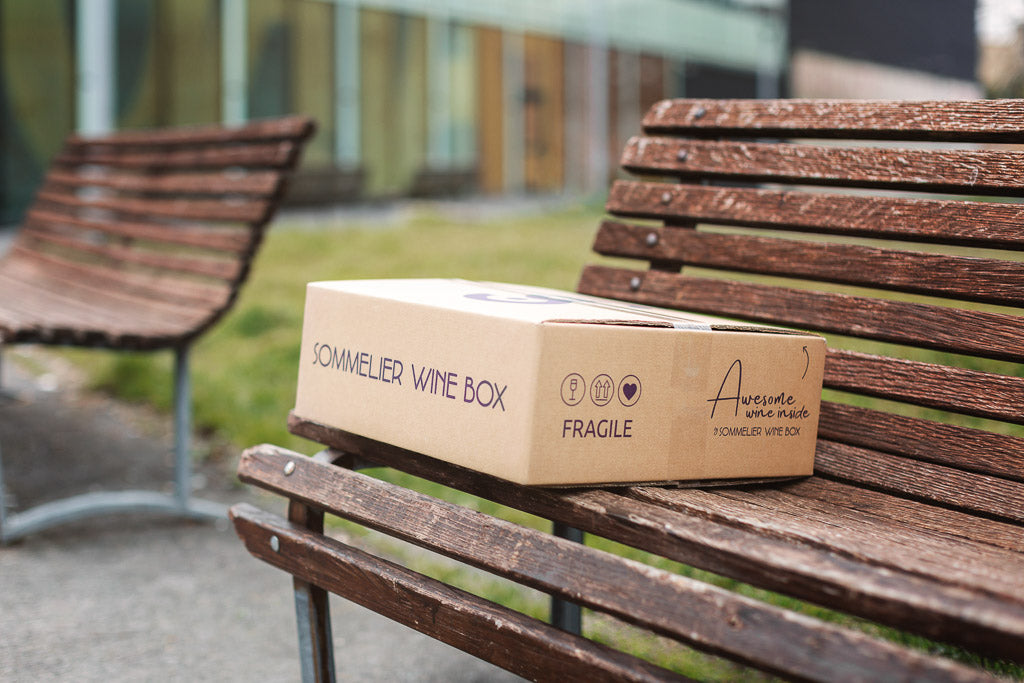Main element of attraction for the purchase of a wine, almost indecipherable white rectangle, purely aesthetic element? The label arouses the most diverse perceptions. In reality it is a fundamental tool for understanding the bottle in front of you. But how do you read a label?
Let's think about it: the label is the face of a bottle . Not only does it have a great influence on the purchase, but it is also what you end up remembering most about that wine. If you don't specifically know the bottle in front of you, the label becomes the element that determines whether or not you buy, because you know how to read it or because you are attracted by its graphics. In fact, the label gives important information, which is good to know in order to purchase and taste with awareness.
What is meant by labelling?
The set of terms, words, brands and images affixed to any type of packaging that accompanies a product.
What is the wine label for?
The label is the identity card of the wine because it certifies the - legal - requirements for its marketing. It protects the consumer, who understands what he is about to drink, and at the same time allows the producer to talk about his wine. At least one bit'.
History of the wine label
The Egyptians and Phoenicians already introduced the first forms of labelling, since the ancient wine amphorae contained information on the contents on the external surface. In the Middle Ages, wine was marketed in terracotta containers, to which small plaques engraved with the name of the wine were affixed, hung with chains.
The first paper labels, very similar to modern ones, are due to our French cousins. Introduced during the eighteenth century , they were first written by hand, then printed.
An Italian record is that of the back label , which Count Giulio della Cremosina placed on his Nebbiolo. We are at the beginning of the nineteenth century.
By hand, he writes: Old Nebbiolo wine from the 1802 harvest left to become bitter. (Grapes from the Val Maggiore and Ochetti vineyards near Vezza, sold by the Sola family in exchange for our Moscati and Brachetti: transported by the sharecropper Dionigi and pressed in the Cremisina cellar). From Cremisina in Holy Week 1806. Count Giulio.
And on the back label: Closed in liters during the Easter holidays of 1806 by our cellarman Michele after three years of permanence in oak vats. Empty slowly: it is an old wine and could have a little background. Cheers!!
What information should the wine label contain?
The wine must carry some mandatory information on the label, while other information is optional .
Attention: the first ones must be written clearly and be readable without having to turn the bottle.
In general, the information to be reported on the label becomes increasingly more precise as the quality of the type of wine increases.
MANDATORY INFORMATION TO BE PUT ON THE LABEL
Here is the information you always find on wine bottle labels.
Product category (wine, fortified wine, sparkling wine, sparkling wine...). Omitted if the denomination of origin, geographical indication or traditional mention is present (Classico, Riserva, Superiore, Gran Selezione...).
Denomination , i.e. DOP, IGP, DOC, DOCG or IGT.
Alcoholic strength (% vol), there is a tolerance of 0.5% above or below.
Origin , i.e. the territory in which the grapes were harvested and vinified.
Vintage , i.e. year of harvest of the grapes, only for DOC and DOCG if at least 85% is of the same vintage.
Bottler , possible importer .
Sugar content , for sparkling wines .
Presence of allergens and sulphites (if higher than 10 mg/l).
Packaging batch , i.e. the number that identifies the bottles packaged in a short period of time.
Quantity .
OPTIONAL INFORMATION TO BE PUT ON THE LABEL
This is the information that can be found on the label.
Manufacturer , possible distributor.
Indication of abbey , castle , fortress ... for wines with Designation of Origin, referring to the agricultural company provided that all operations take place there.
Logo identifying any allergens.
Vintage of the grapes if at least 85% are of the same vintage (for DOC and DOCG the vintage in this case is mandatory, as seen above).
Grape varieties : only one vine can be named if it represents at least 85% of the varieties used; two or more vines can be nominated if they represent all the varieties used, only for wines with Designation of Origin (i.e. you can nominate only one variety if this is the majority and if you indicate more than one, you must indicate them all).
Sugar content , only for non-sparkling wines.
Processing or aging method , only for wines with Designation of Origin (Superior, Vino novello ...).
Production method of DOP/IGP sparkling wines.
Indication of geographical units smaller than PDO/PGI, if at least 85% of the grapes come from those areas (only for wines with Designation of Origin).




